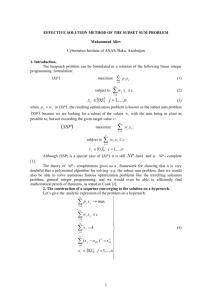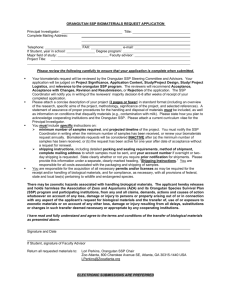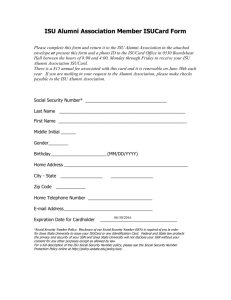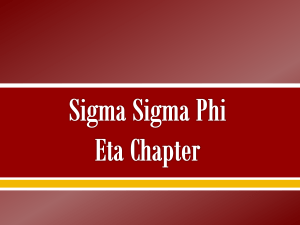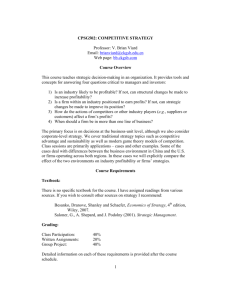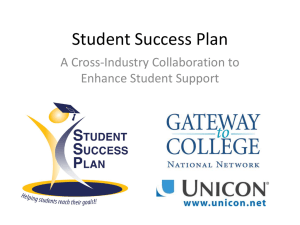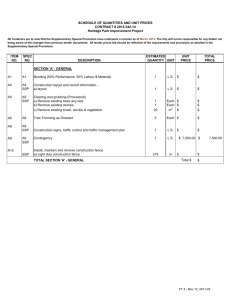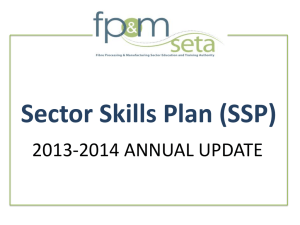PDF file
advertisement
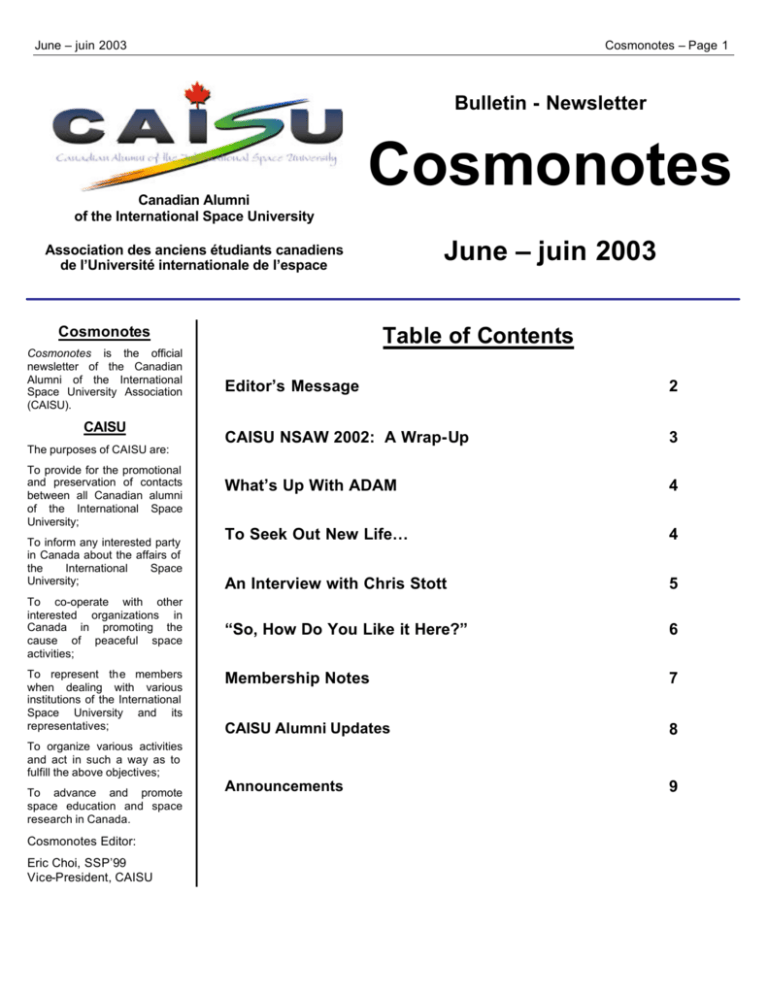
June – juin 2003 Cosmonotes – Page 1 Bulletin - Newsletter Canadian Alumni of the International Space University Cosmonotes June – juin 2003 Association des anciens étudiants canadiens de l’Université internationale de l’espace Cosmonotes Cosmonotes is the official newsletter of the Canadian Alumni of the International Space University Association (CAISU). CAISU The purposes of CAISU are: To provide for the promotional and preservation of contacts between all Canadian alumni of the International Space University; To inform any interested party in Canada about the affairs of the International Space University; To co-operate with other interested organizations in Canada in promoting the cause of peaceful space activities; To represent the members when dealing with various institutions of the International Space University and its representatives; Table of Contents Editor’s Message 2 CAISU NSAW 2002: A Wrap-Up 3 What’s Up With ADAM 4 To Seek Out New Life… 4 An Interview with Chris Stott 5 “So, How Do You Like it Here?” 6 Membership Notes 7 CAISU Alumni Updates 8 Announcements 9 To organize various activities and act in such a way as to fulfill the above objectives; To advance and promote space education and space research in Canada. Cosmonotes Editor: Eric Choi, SSP’99 Vice-President, CAISU June – juin 2003 Cosmonotes – Page 2 Editor’s Message By Eric Choi Welcome to Cosmonotes, the June 2003 edition. Thank you to everyone who submitted articles and updates. Cosmonotes cannot exist without your contributions and involvement. This is also my first time as Editor, and I welcome any feedback you might have. Please feel free to contact me at figmo99@rogers.com. As a society, much of our collective memory is encapsulated by pictures. This is particularly true of spaceflight – Buzz Aldrin standing on the Moon, the Challenger exploding in a crisp blue Florida sky, Voyager 1 seeing the Earth as a pale blue dot from the edge of the Solar System, the Sojourner rover on the surface of Mars. For many of us, one of the most enduring images of 2003 will be that of the space shuttle Columbia disintegrating in the skies over Texas. But we should remember this picture as well: Credit: The Planetary Society That’s Yuval Landau on the left, and Tariq Adwan on the right. Yuval is an Israeli medical student from Tel Aviv, and Tariq is a Palestinian biology student from Bethlehem. They were student co-investigators for an astrobiology experiment, sponsored by The Planetary Society and Instrumentation Technology Associates (ITA), that was aboard Columbia. This picture should remind us that Columbia must not be remembered only as a name associated with tragedy, but as a symbol of how the common spirit of exploration and discovery might help us overcome some of the seemingly intractable problems of our fragile home planet. We go into space for many reasons -- science, adventure, prestige, even commerce. But fundamentally, we go into space because it is an enterprise of optimism, an embodiment of the notion that we can be better than the way we are now, that tomorrow can be better than today. It’s why the crew of the Columbia chose their profession. It’s why Tariq and Yuval are smiling. It’s why Bob and Peter and Todd founded ISU. And it’s why another group of remarkable Canadians will be making the journey to SSP 2003 in Strasbourg in just a few short weeks: • Hugo Bloomfield • Katrina Brandstadt • Diane Burchett • Alexa Figgess • Fleur Huang • Dawn Yin Lim • Caroline Nowlan • Tim Poon • Leissa Smith • Su-Yin Tan Canadians have always been leaders, mediators, and bridge builders at ISU. That role will be even more important this summer. The ten new members of the CAISU family are more than up to the task. They will work hard and play hard. And, they will be taking pictures – of beer in a canoe, of classmates nodding off in lectures…and of smiling faces. Lots and lots of smiles. A footnote on Tariq and Yuval. The middeck payload that housed their experiment was retrieved from a debris field. A team from The Planetary Society and ITA has been working to salvage the samples. They are optimistic that scientific results will be recovered. The future belongs to the brave. Eric Choi (SSP’99) is a systems engineer at MD Robotics and the Vice-President of CAISU. June – juin 2003 Cosmonotes – Page 3 CAISU NSAW 2002: A Wrap-Up By Richard Giroux On April 22, 2003, the mass mailing of the final report put an end to the great experience of the National Space Awareness Workshop (NSAW). It all started at the CAISU AGM of December 2001, where I got elected as VicePresident and then implicitly Chairman of the biennial CAISU event. Building on the success of the first edition (and I would like to thank Brian Rishikof and Jonathan Knaul on that point for the archaeological work they did in order to retrieve some information about the latest CAISU workshop), the CAISU NSAW 2002 was still a challenge to organise because of budget constraints. However, in addition to our main sponsor (CFISU), three other sponsors joined our efforts to provide a great experience to the participants: the ? cole de technologie supérieure (a Montréal-based university), Optech Inc., and MacDonald Dettwiler and Associates Ltd. (MDA). Also CSA, CASI, and SpaceJobs provided in-kind contributions. Many thanks to them for making this event possible. CAISU NSAW at a Glance: Commercialization & Space Technologies Andrew Eddy (Athena Global) This year's workshop theme highlighted the interdisciplinary nature of space, with special emphasis on the future participation of Canada in space activities. Our intense day together was organised into a compressed ISU: interdisciplinary lectures, distinguished lectures, design project brainstorming, teamwork, decision-making, and presentation. Human Presence in Space Douglas Hamilton (NASA JSC) Space Exploration, Space Science David Kendall (CSA) Remote Sensing and Communication Scott Madry (Informatics International) Public Outreach and Education Johanne Patry (?cole Secondaire Vaudreuil) History of Canada in Space Alain Poirier (Intellium Technologies) The day was very exciting. After a morning of excellent and enthusiastic lectures, Dr. Robert Thirsk talked about the journey of becoming an astronaut, from the selection to the mission. Afterwards, attendees were split into six workgroups to define their vision of different space sector activities. This daunting task was successfully fulfilled despite a huge time constraint (six hours of work, from 2:00 PM to 8:00 PM). I could write much more on the product that came out of that day, but I think the best for you is to go on the website and download the electronic version of the final report (http://www.caisu.ca/nsaw). Finally, this workshop would not have been possible without the many volunteers who helped that day, and the dedicated people on the organising committee who worked all the year long to make the day a success. Many thanks again to all, and see you next year for CAISU Day 2004! Organizing Committee Chair Richard Giroux (?cole de Technologie Supérieure) Co-Chair, Morning Lectures Josée Adamson (NASA Glenn) Jonathan Knaul (Canadian Armed Forces) Webmaster and Graphics Simon Kruijen (MDR) Editor, Final Report Joan Saary (U. of T.) Logistics Officer Allison Jennings (U. of Ottawa) Conference Lecturers Workshop Moderators Space Science Josée Adamson, (NASA Glenn) Commercialization and Space Technologies Andrew Eddy (Athena Global) & Alain Poirier (Intellium Technologies) Geomatics and Communication Shannon Kaya (CCRS) & Scott Madry (Informatics International) Public Outreach and Education Johanne Patry (?cole Secondaire Vaudreuil) & Philomena Bonis (Waterloo Region School Board) Space Exploration Larry Reeves (MDA) Human Presence in Space Joan Saary (U. of T.) Volunteers & Guest Contributors Volunteers George Dyke (MDR) David Philips (CSA) Julielynn Wong (Queens) Richard Giroux (SSP’01) is a Ph.D candidate at ?cole de Technologie Supérieure in Montréal and a former VicePresident of CAISU. He is currently completing his research at the University of Sydney’s Australian Centre for Field Robotics. Guest Contributors Judith Lapierre (Réseau des services de santé en français de l’est de l’Ontario) Nancy Martineau (McGill) Eric Choi (MDR) June – juin 2003 What’s Up With ADAM By Natalie Galley The Association for the Development of Aerospace Medicine (ADAM) was born in July 1999 at UNISPACE III, the United Nations Conference on the Exploration and Peaceful Uses of Outer Space held in Vienna. Today the original chapter founded at McGill University boasts a strong membership of students and professionals with interests in space medicine and other related issues. Our common mission is to promote space medicine and its applications by providing an international, intercultural, and interdisciplinary approach to learning about aerospace medicine and the space field as a whole. With lecture series, discussion groups and educational outreach activities, ADAM maintains an active role in nurturing the advancement of knowledge in space and the aerospace medical sciences. This spring, ADAM was proud to host its first student conference devoted to the aerospace medical sciences. The two-day Summit on Aerospac e Medicine (SAM) took place March 21-22 at McGill University, and brought together students and professionals in an open forum that included lectures and discussion groups. Our goal was to make SAM an intriguing, informative, innovative, inspirational, and above all, enjoyable experience. SAM was met with a very enthusiastic response from its participants, all with varying backgrounds and interests. They came from Montréal, Ottawa, Kingston, Halifax; some were even in town visiting from Europe and East Asia. All contributed to the success of the event. In organizing SAM, the ADAM executive was thrilled by the overwhelming response and support we received, particularly from the distinguished speakers who made the event so rewarding. Our keynote speech reviewed the future of human spaceflight, space tourism and its related health issues and was given by Dr. Peter H. Diamandis, whose numerous space-related endeavours include the $10-million X-Prize competition and co-founding the International Space University. SAM hosted seven other illustrious guest speakers, including Dr. Ram Jakhu, a lawyer and consultant who teaches at McGill’s Institute of Air and Space Law; Dr. Claude Thibeault, the president of the Aerospace Medical Association; Dr. Geoffrey Waters, a Guelph University post-doctoral fellow working with both the European and Canadian Space Agencies in the area of bio-regenerative life support; Dr. Heather Jenkin, a Vision Research scientist at York University specializing in spatial disorientation; and Patrick Sullivan, a physiologist and operational space medicine project manager at the CSA Astronaut Office. ADAM was also pleased to welcome back two of its co-founders, Dr. Marlene Grenon, now a McGill cardiac surgery resident undertaking clinical research at Harvard and MIT, and Dr. Carol Chahine, an incoming McGill oral maxillofacial surgery resident Cosmonotes – Page 4 currently studying bone biomechanics in Toronto, with their presentations on surgery in space and the effects of spaceflight on bone. With the end of the academic year, ADAM has wrapped up its fourth year of activities by welcoming in a new executive who is eager to continue the ADAM tradition. September will bring our fifth annual Space Career Panel, the first fall event in our ongoing lecture series, and hosting a varied, vibrant group of researchers and space professionals. The 2003/2004 year will also bring more discussion groups where members come together to discuss and exchange ideas about current space-related issues. Our space education program tailored to elementary-school students will also be a highlight. To learn more about ADAM, please visit our website at www.geocities.com/adammcgillca, or contact us at adam_mcgill_ca@yahoo.ca. Natalie Galley is the secretary of ADAM. She is currently doing an internship at the Canadian Institute for Theoretical Astrophysics at the University of Toronto. þýü To Seek Out New Life… By Adrienne Kish The search for life elsewhere in the Universe is often associated with ET-like flashes in the sky and shrouded in Area-51 mystique. The truth is a lot closer to home than you may think. Scientists in recent years have been discovering life in places nobody truly expected. Hot vents deep in the ocean floor, subsurface lakes in Antarctica, and the Dead Sea (a misnomer if there ever was one) have all been found to be the happy homes of some amazingly resilient microbes whose study has forced us to redefine the boundaries of life’s possibilities. Unicellular organisms have been found that can survive inside a nuclear reactor core and within salt crystals. These have also been found to be some of the most ancient forms of life here on Earth, arising shortly after the pounding the Earth took at the hands of planetessimals during the Late Bombardment Period. Studying these exotic organisms’ genomes, protein composition, physiology, and DNA repair mechanisms gives us great insight into their highly developed survival methods. This allows us to re-examine the environments considered “friendly” to life as we know it, both here on Earth and elsewhere in the vast and diverse expanse of space. It’s an applicable field of study in this day in age after the Alan-Hills meteorite reports ignited such controversy and speculation among those who are looking elsewhere for signs of life. We have June – juin 2003 come to realize that the life we might find may be significantly less advanced than us, and will most likely come in a simple unicellular form. Understanding the earliest forms of microbial life here on Earth takes on greater significance as scientists seek to unravel the mysteries of life’s origins. The archaeal genomics lab at the University of Maryland in College Park where I am currently interning is investigating DNA repair and replication mechanisms in halophiles (salt-loving organisms that thrive in highly concentrated brine environments including moist enclosures inside salt crystals) and hyperthermophiles (microbes that thrive near the temperature of boiling water). Studies are ongoing under the direction of Dr. Jocelyne DiRuggiero into the capacity of these organisms to uptake genetic material from other prokaryotic and eukaryotic organisms and incorporate it into their own genome in a process referred to as “lateral gene transfer”. This process confers to these micro-organisms the ability to acquire proteins and pathways from other microbes, thereby increasing their chance of survival in a diversity of environments. This is an important characteristic to keep in mind when one considers that recent ribosomal RNA gene sequencing efforts have placed the archaic in a deeply branched position in the tree of life, indicating their ancient origins in the rise of life on Earth. In fact, archaic are designated as the third domain of life, the other two being eukaryote (or eukaryotes) and bacteria. This means that some of the earliest known life on Earth could exchange genetic material with some other early unicellular organisms through contact, expediting evolution through the acquisition of new heritable features. Halophiles are a type of extremophiles (as these classes of organisms found in such inhospitable environments have been dubbed) that have also been found to possess highly developed systems to repair DNA lesions caused by exposure to such extreme environmental conditions as desiccation, space-like vacuum, and UV irradiation. The halophiles, in fact, displays near-full survival in the presence of gamma radiation levels a hundred times that which would kill you or I. They also display incredible resistance to high vacuum at levels found in the nearEarth space environment without any significant decrease in their survival ability. Their DNA repair ability is supplemented in this case by the fact that in evaporative environments, the cells become encased in brine enclosures within salt crystals. These crystals act as a protective shield around the cells, protecting their membranes from rupturing. While halophiles grow optimally in the 37-42°C, in temperatures below 4°C the cells remain viable while suspending metabolic functions and could possibly remain so indefinitely while maintaining their ability to be rejuvenated. Halophilic survival in cosmic environments is probably a side-effect of their evolved mechanisms for survival in desiccating evaporative brine conditions, but it gives us a model to work with for what a unicellular organism might look like if Cosmonotes – Page 5 it were to be found in a less-shielded place than our atmosphere-enclosed planet. The space-worthiness of this organism is set to be tested late this year on a piggyback launch in conjunction with the NASA Goddard Space Flight Center when they launch the SERTS solar observatory telescope aboard a sounding rocket. The total flight time will be about 20 minutes, with 7 minutes of exposure to the vacuum of space prior to returning to Earth for recovery. Is life elsewhere in the Cosmos? No one knows. What we do know is that there is life here on Earth, and we are continuing to find new forms of it, even given the centuries that have been spent exploring this planetary body of ours. Until we really know what we are looking for, the best place to start is in our own backyard. It sounds trite, but given the discoveries that have taken place all around the world in recent years, maybe it’s time to shake the dust off that old maxim and see what else is under our feet. The answers we find will doubtless help us fine-tune our approach towards the potential for life elsewhere. Adrienne Kish (MSS’03) did her placement at the archael genomics laboratory at the University of Maryland. She has been accepted as a Ph.D candidate in the same lab under the supervision of Dr. Jocelyne DiRuggiero and will continue the research she started during her placement there this fall after graduation from ISU. þýü An Interview with Chris Stott By Nicole Di Carlo Chris Stott (MSS’96, U.K.) has wanted to work in the space industry for as long as he can remember. But the exact nature of that involvement has changed through the years. He knows he will never be a great space scientist or explorer like his wife, astronaut Nicole Stott, but hopes instead to contribute through both business and politics. Chris attended the University of Kent in Canterbury, where he earned his Bachelors of Arts (Honours) degree in American Studies. He also has a Diploma in International Relations and Marine Policy from the University of San Diego and the Scripps Institute of Oceanography. In addition, he attended the ISU MSS session of 1996, where he earned his Master of Space Studies (one of my future goals). He is currently a professor of space law at the University of Houston – Clear Lake, and is a published Fellow of the Royal Astronomical Society. As for jobs along the way, Chris has been everything from a bartender and waiter to working in the U.S. Senate and June – juin 2003 Cosmonotes – Page 6 the White House. He has also worked on both British and American political campaigns, co-authored Europe’s first book on space privatization, and was the special projects director for a U.N. non-governmental organization called Life Education Centres that worked to prevent drug abuse through health education. In addition, he was the former director of international commercialization and sales at Lockheed Martin, responsible for helping to administer the NASA Consolidated Space Operations Contract (CSOC). He is currently the president and CEO of his own business, ManSat. spends time with his wife Nicole, and two dogs Stella and Lucy, as well as with friends. In terms of his future career goals, Chris hopes to keep working in the space industry, “adding positive actions and results and helping to build an industry that will benefit humanity.” According to him, it is through faith, dreams, and the determined pursuit of goals that one moves ahead in the space business. What would he recommend to someone entering into a space career? “Have faith, follow your dreams, get educated, get experience, have patience, and above all get to ISU!” he says. “ISU is the key to getting started in this industry.” Nicole Di Carlo attended the International Space School in Houston. She is a student at Chinguacousy Secondary School in Brampton, Ontario, currently doing a co-op placement at MD Robotics. Going to ISU is one of her most important career goals. þýü “So, How Do You Like it Here?”: A Tale of a Dane in Toronto By Martin Knudsen Credit: ManSat According to Chris, the biggest barrier to his goal of working in the space industry was being British. The U.K. does not (yet) have an extensive space program. Attending ISU allowed him to meet and work with people in the larger international space industry. The second biggest barrier was being “typecast” into social sciences by the British education system when he was too young to know better. Again, ISU helped him get past this. Working in the space industry is the career path he has chosen to follow, and will continue to follow for as long as he can. “It is more than a ‘career’ for me,” Chris says. “It is a lifestyle. It is a life’s work. I work for the future, to try to make the future a better place. The space industry is the future of humanity. I can’t imagine not working in this industry. The fact that we can make a positive difference to the rest of human history is the reason why I work, why I get up in the morning.” Outside of family, friends, and faith, job satisfaction means everything to him. What is the only thing that would increase his satisfaction? “More work,” Chris replies. He considers his job very stressful, but says it’s “good” stress. To unwind, he I was fortunate enough to get an internship with Optech’s Space and Atmospheric Division in Toronto and be able to come here, accompanied by my girlfriend for two of the three months. We only knew one person living here before we came, but when we go back we will be leaving several friends and good acquaintances. We like it just fine, thank you! Toronto is a very nice city, and it has been a good stay. Our base has been at York University – a bit far away from downtown, but within walking distance of Optech. We have taken several trips such as to go skiing, visit the U.S., and see Niagara Falls and it has been good. This year spring came very late, but in fact the weather has not been bad – very few rainy days, although lots of snow, but certainly beautiful clear skies more often. Toronto is often referred to as a “melting pot of cultures” and there are indeed a lot of cultures here, but they have not been melted and mixed into a bland indescribable colour, at least not yet. Maybe they never will. The cultures are still very distinct, people integrate into the Canadian society and maintain their cultural identity. From the perspective of an outsider, coming from too much ethnical focus and trouble in Europe, things appear to go smoothly here. So smoothly that language, skin- June – juin 2003 Cosmonotes – Page 7 color and heritage isn’t much of an issue other than as something positive that makes people unique. At a birthday dinner last weekend our party of eight had roots from around the globe; a very nice intercultural constellation of people. Membership Notes Optech has roughly 200 employees and is a global market leader in several lidar (light detection and ranging) applications including airborne lidar bathymeters and laser terrain mappers. The words “global market leader” is a standard phrase in every presentation we give, but if it’s true, why not say it – and repeat it so people don’t forget! CAISU growing rapidly! The Space and Atmospheric Division is led by Bob Richards, co-founder of ISU, and is a new division at Optech. During my stay here they were awarded two major contracts with their strategic partner MD Robotics: The Phase A study for the 2007 Phoenix Mars Scout mission, and a lidar flight sensor for a U.S. autonomous satellite rendezvous demonstration program. They are also working on equipment that may be put on the Space Shuttle, so it has indeed been an exciting time to be here. I have not been involved in these projects, but have instead worked independently on market and c ompetitor analysis. From my cubicle, I researched government and space agency strategies in the near- to long-term future, constructed profiles of companies and affiliations that are or could become competitors, and made profiles of projects with contractors. A fully cross-referenced database structure was designed and programmed to contain the information, make it easily accessible and updateable, with the capability of performing advanced queries on and print reports from. B eing used to dealing with large data sets and searching for patterns and hidden information from my astrophysics background and not being afraid to program a little from my IT background, I was not completely unsuited for the job even though I had never been called a business support analyst before. It has been a great learning experience for me here, to adapt to yet another societal and company culture, to stay informed on the space industry and space politics, to learn new software tools, and to study all the activities of a unique high tech company. On a personal level, I have now tried the happy family life in Toronto while working in a company where one easily builds co-worker friendships, while still missing relatives and old friends. So, my priorities have become a bit clearer after this stay as well. It’s time to start making my way home to Denmark after living abroad (ie. Belgium, France, Canada) over the last three years. I will bring back all my good experiences, and will definitely recommend doing an internship in Toronto to future MSS students. Martin Knudsen (MSS’03, Denmark ), an astronomer and astrophysicist, did his MSS placement at Optech Incorporated in Toronto. By Valery Tessier-Leon Every SSP and MSS class brings new members to the CAISU family, and this year more then ever. CAISU now has now over 200 members living around the world, and is working into making sure that no Canadian alumnus is left behind. But it is sometimes hard to keep up with so many members that seem to be moving at the speed of light! So, here’s how you can help us: Keep in Touch… Whether you’ve moved or simply changed your email address, make sure you inform the CAISU Membership Director (that would be me). Simply drop me an email at valerytessier@yahoo.com with your new information. I will make sure the membership listing and CAISU alumni news group are updated. Do You Know Where They Are? My search for lost alumni last January was very successful. Thanks for your great help. Unfortunately, some CAISU members are still lost… in space: • Nicholas Audet (SSP'93) • Kimberley Baker (SSP'94) • John Bird (SSP'89) • Claudie (Durand) Bortolus (SSP'94) • Leslie Buckley (SSP'97) • Carole Chahine (SSP'00) • Eric Epstein (SSP'94, '95) • Martin Gauthier (SSP'94) • Celine Levesque (SSP'91) • Roanie Levy (SSP'92, '95) • Kristiina McConville (SSP'88) • Michael Simpkin (MSS'02) • Suzanne Talon (SSP'92) If you have information regarding any of these folks, please let me know at valerytessier@yahoo.com. Valery Tessier-Leon (MSS’00) is the CAISU Membership Director. She works on safety and mission assurance for the ISS program at the NASA Johnson Space Center. June – juin 2003 Cosmonotes – Page 8 CAISU Alumni Updates To have your update included in future issues of Cosmonotes, please send your information to Eric Choi (SSP’99) at figmo99@rogers.com. Frederic Nordlund (SSP’89) Greetings from Washington, DC where I landed about two and half years ago. After working here at the ESA Washington Office for a two-year period, I became the Head of the ESA Washington Office last December. I can confirm that every minute of being in that function is enjoyable and is both professionally and personally rewarding. Nonetheless, this did not stop me from pursuing regular contacts with CAISU and with so many Canadian friends. CAISU continues to be a model for all ISU alumni associations and to carry high the ISU flag. Congratulations for all these great achievements! Should you have any opportunity to come to Washington, please do not hesitate to stop by at the ESA Office. My contacts are as follows: Christopher Barrington-Leigh (SSP’96) After a postdoc in space physics in California, and a total of 12 years in the United States, I am finally moving back to Canada as part of a rather early "midlife" career crisis and transformation. I will be returning to school for a graduate program in political economy at UBC! I look forward to meeting all the Vancouver ISU folk. Johanne Heald (SSP’96) In May, I was awarded a Ph.D in aerospace engineering from the University of Colorado. I am planning to stay in Boulder for a few more months, writing papers, flying gliders, and hiking in the Rockies. My next exciting destination is still a mystery…even to me! Jonathan Knaul (SSP’98) European Space Agency (ESA) Washington Office 955 L' Enfant Plaza SW Suite 7800 Washington, DC 20024 USA 202-488-4158 (voice) 202-488-4930 (fax) frederic.nordlund@esa.int Hey everyone, I am back from France! I was posted to 4 Wing, Cold Lake, Alberta in September 2002 (a big change from the south of France). At 4 Wing, I have been assigned to the Rotary Wing Test Flight at the Canadian Forces Aerospace Engineering Test Establishment. My principle duties are obviously helicopter test flying, and as well, I have taken over the night vision test pilot position for the Forces. If you dare venture this far north, you are all welcome anytime to come visit me, and I can probably work out a tour of our test bay too. Contact me via email if you are in the neighbourhood (jknaul@hotmail.com). Marc Simmons (SSP’89) Valery Tessier-Leon (MSS’00) I started a new job last April. I now work for VERITAS Software as a senior product planner. VERITAS is a provider of storage management software. Also, on August 31, 2002 I got married in Montréal to Gillian Johnson. Fellow alums Robert Parent, Brian Rishikof. And Chris Sallaberger attended the joyous celebration. There was much laughter during the ceremony…at my expense, I think! My husband Ricardo Leon (SSP’99/MSS’00, Mexico) and I are now the proud parents of a baby girl, Ariane, born on February 15, 2003 in Webster, Texas. I returned to work on May 12, and will be doing Increment planning work for the International Space Station along with working realtime operations at the ISS safety console. Michele Shemie (SSP’94) I am back in Montréal after a year of supporting a client, Dassault Aviation, in Paris. Working with French, Italian, Spanish, Dutch, and American partners, as well as engineers, contract negotiators and high-level management, my international, intercultural, and Interdisciplinary skills from ISU sure came in handy. See you all soon in Montréal! þýü June – juin 2003 Cosmonotes – Page 9 Announcements http://bremen.unsgac.org/Applications.htm Many thanks to Jim Volp (MSS’00, Netherlands) for these announcements that will definitely be of interest to alums: For additional information, please email: SGC-info@unsgac.org Space Generation Congress (SGC) The Space Generation Congress (SGC) is a meeting of approximately 200 international young delegates to articulate the vision of young people on the future utilization and exploration of space. It is being held over the weekend of September 27-29th in conjunction with the International Astronautical Congress (IAC), and builds on the work of the Space Generation Summit (SGS) held at the World Space Congress in Houston in 2002. Delegates will implement the recommendations generated at UNISPACE III/Space Generation Forum. SGC will enable working groups to meet in person to work on their respective projects, and present their work to their colleagues and the international space community gathered at the IAC in Bremen, Germany. The working groups are: • Global Space Curriculum • Space Policy • Peace in Space • International Centre for Advanced Propulsion and Launchers • Global Space Prize • Under Asian Skies/Expanding Cosmos Education • Horizons Project/U.N. Reform • Space@Home • Space Branding • Space Camp/Week for Politicians • Brainstorm/Fresh Idea Group This event is facilitated by the Space Generation Advisory Council (SGAC) in support of the United Nations Program on Space Applications, the body through which students' and young professionals' views are brought to the United Nations Committee on the Peaceful Uses of Outer Space (COPUOS). Delegates will be selected two months prior to the meeting, and will work together on-line in the months preceding the summit to create the SGC program, and to draft SGC-documents and presentations. The application deadline is June 30, 2003. MOONMARS Workshop The MOONMARS Workshop is a youth event that will evaluate the commonalities between current Moon and Mars exploration plans. Students and young space professionals, assisted by experts, will generate a unified youth vision on the benefits of a combined MOONMARS strategy. It will also provide the exciting opportunity for youth from around the world to meet, work and learn from experts in the field. The MOONMARS workshop is being held over the weekend of September 26-28th in conjunction and is colocated with the third European Mars Society Convention (EMC3). The MOONMARS workshop will comprise 60 delegates and between five to ten experts. During the workshop the delegates will be part of one of a total of nine working groups, each concerned with a keyarea of Moon and Mars exploration: • Space Technology -- Design of a colony on MOONMARS, spacecraft transportation systems, MOONMARS habitats • Mission Planning and Operations – Resource utilization, near-term Moon/Mars roadmap, scientific research and life sciences • Management Approach – Management and legal aspects, education and public support, Moon/Mars commercial activities. Applications are now being accepted for the MOONMARS Workshop. Students and young professionals between the ages of 18-35 who have an interest in MOONMARS exploration are encouraged to apply at our website: http://www.unsgac.org/MOONMARS/ For more information please visit the website: http://www.unsgac.org/MOONMARS/ Information about application procedure is available at: For more information please visit the website: http://www.unsgac.org/MOONMARS/Applications.html http://bremen.unsgac.org/ For additional information, please email: Information about application procedure is available at: moonmars@unsgac.org
